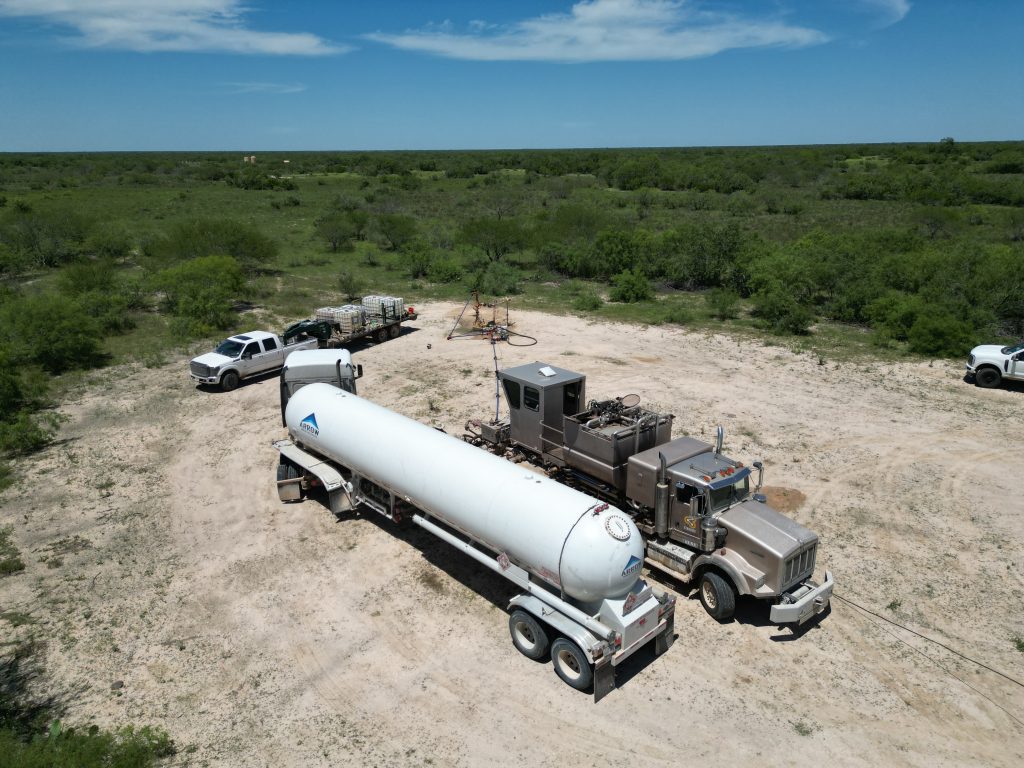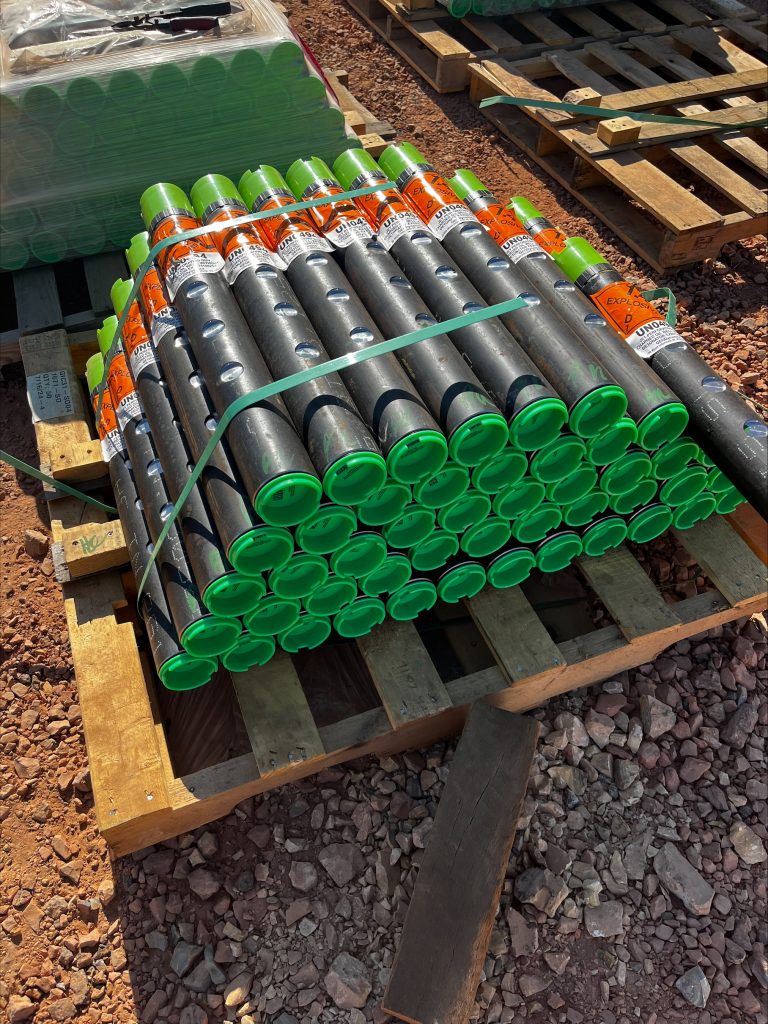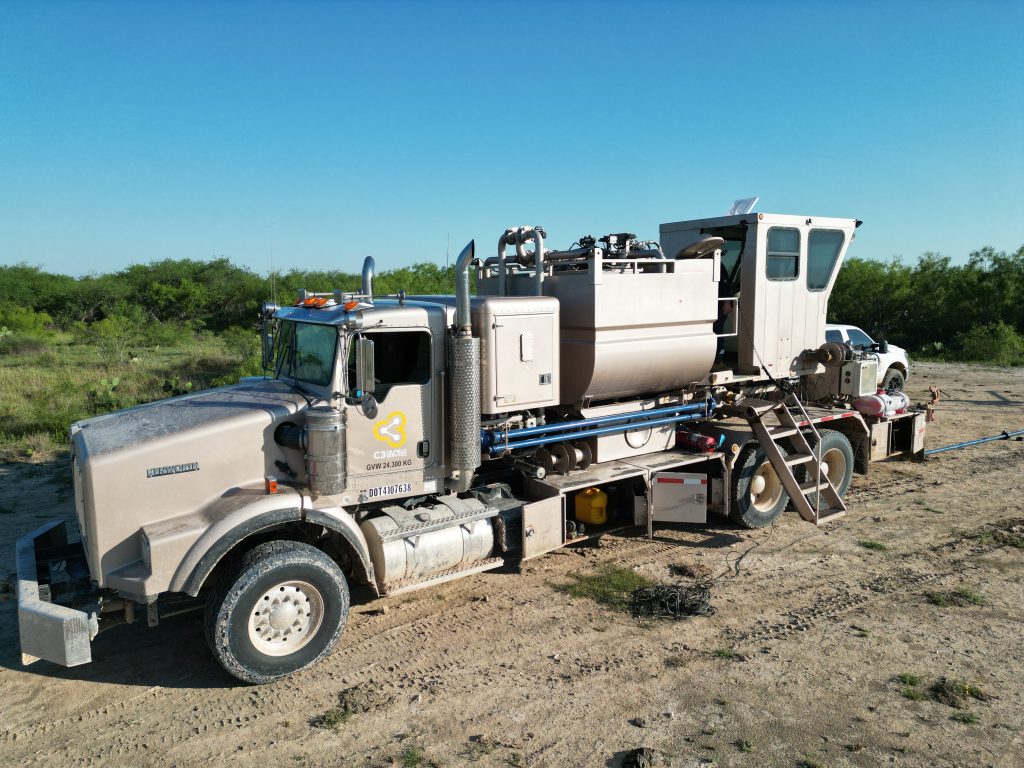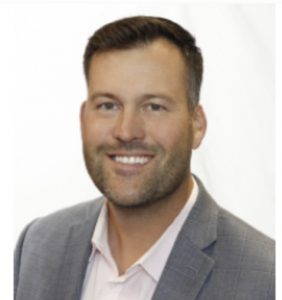Click here to listen to the Audio verison of this story!

C3 Oilfield Services has pioneered what it calls “new wave” huff-and-puff operations. Here they pump propane into an underperforming well to stimulate better performance.
The shale revolution 20+ years ago opened a new era of production for the United States and the Permian Basin in particular—while still leaving the vast majority of the oil in the ground. Over the years, engineers have worked on opening up more oil from these tight shales, both in initial production and in reentries through enhanced oil recovery (EOR).
Here we will look at two aspects of well stimulation. C3 Oilfield Services is changing the game in what’s been called “huff and puff” single well treatments, which are necessary in tight shales. And GEODynamics® uses a data analytics model, called StageCoach™ to predict and direct proppant flow during the initial frac process.
C3 Oilfield Services has been at work changing the huff and puff game in recent years. In their original process, known as Single Shot, they already were replacing water and CO2 with profitably recoverable treatments like “propane, butane, pentane, all the way up to C12-C13 any combination thereof,” said Daniel Purvis, C3’s VP of business development.
To those elements they add their “proprietary chemistry cocktail surfactant to foam” to treat underperforming wells. Often those treatments are used to dissolve paraffin in the wellbore or in the tubing, or to unload water or other liquids, and the company has seen success in the Permian and in South Texas. This results in greatly improving the well’s decline curve.
Horizontal is the Future
So far, they’ve only done vertical wells, but with the future being in horizontals, they’ve developed new fit-for-purpose equipment for the longer, higher production wells.
What’s made this possible is reformulating their mix to require much less pumping, shorter onsite times, and, therefore, greatly reduced down time and costs. Tadd Wallace, C3 CEO, explained that, in many vertical wells, they’re using 100-200 barrels of some type of NGLs pumped in 1-2 hours to greatly reduce the costs.
“Essentially,” said Wallace, “the new-wave huff and puff is what we’ve built here.” That’s the old term for EOR in tight shales that is applied one well at a time. Theirs is the same in that regard, but Wallace and Purvis say their process is faster, more cost-effective, and more productive. In many wells, “For just the cost of renting a compressor for a traditional huff and puff they can pay us to do the whole job,” Wallace said.
Recently they’ve been using this cocktail blend for remediation, both in paraffinic wells and in condensate wells suffering from liquid loading, said Purvis. In the latter they’re using propane’s solubility and miscibility properties as they interact with downhole liquids and gas in wells with condensate loads near the wellbore.
The need becomes clear when a well’s previously smooth decline curve hits a snag and drops dramatically. “And that tells us we’ve got probably some condensate block there. We’ll go in, we’ll pump a very small job, a couple of hundred barrels. And because of the miscibility properties of propane with that condensate, it reduces the surface tension and, introducing viscosity, flows it out, clears it up, and gets that well back to its original decline curve.” Sometimes it does even better than before.
Going the Distance
The future is in horizontals and long laterals, and they’re moving that direction, starting in the Bakken, but with eyes on the Permian Basin as well. Adapting their historic treatment to horizontals has involved investing in more-powerful equipment. Wallace and Purvis feel they can get the same results as with verticals.
Wallace said, “The capital problem with the huff and puff was all the large equipment and large CapEx needed to put out to achieve it. Well, for just the [cost] of renting the compressor to do a huff and puff they can pay us to treat the whole job.” Many operators tried older methods and had some success, but the cost of the operation meant it was still a net loss.
The problem with the “huff-and-puff” operations was the high capex needed for long-term facilities and large compressors and rentals that are needed, not including the value of the injected fluid choice. With C3 OFS services, that cost is cut down to a low capex that is a small fraction of the capex needed for the known “huff-and-puff” operations with no long-term infrastructure.”

This pallet of perforating guns, called a gun carrier, displays the trademark green of GeoDynamics. As a leader in oilfield explosives, GeoDynamics now takes their science a step further, as they pioneer ways to incorporate powdered tracers into their charges, to help measure effectiveness downhole. Says Eric Marshall: “We can catch that tracer coming back in production and actually see on a cluster-to-cluster level how that stage is producing,”
Specifically, “We’re able to do what, just three years ago, would have cost $3-4 million for [less than] half—for $1,000,000 now. We’ve got the process smaller, more efficient, less capital intensive, and less mechanically intensive, i.e., not nearly the amount of equipment on surface personnel and whatnot.”
Another cost benefit is that the treatments they pump down are commodities that can be sold when they return to the surface. That includes propane, butane, produced condensates, drip gas, and more.
They see time savings as well. Wallace said an average vertical job shuts in a well for 12-48 hours. For horizontals, working 24-hour days, they expect to take 3-10 days. With this method the benefit does outweigh the cost—and it’s proven in verticals and, it is hoped, will also be true in horizontals.
GEODynamics Sees Below the Surface
Because most oil industry processes are deep below the surface, it’s sometimes hard to tell exactly what is happening down there. Recent technological gains have given operators and service companies greater insight, letting them improve procedures that can grow production. GEODynamics’ StateCoach data analytics modeling solution is among those.
At first glance, in the completions process, creating holes for the proppant to enter the formation seems simple, said Eric Marshall, senior engineering technical advisor for GEODynamics. “Perforations [teams], as a whole, ask how big you want the hole, how many holes do you want and how many holes per foot do you want?”
Easy? No. But wait, there’s more.
Longer laterals and more clusters complicate matters. “But when we’re doing eight, ten, or twelve clusters per stage we have to focus on diversion and making sure the diversion of the fluid is as even as possible across those stages,” he added.
Ensuring frac hole sizes are equal across clusters is vital in distributing frac fluid evenly. Even distribution maximizes production—the actual goal—by opening as much of the formation as possible to oil flow. In the Permian, stress contrasts between formations make that a challenge, Marshall said.
Minimizing or equalizing the erosion of holes is also important in equalizing flow. Holes in the first perforations, towards the heel, see the full frac rate go by, exposing them to more erosion than the last ones, in the toe.
Seeing is Understanding
StageCoach’s ability to predict the frac fluid flow came about through a series of surface tests in which they pumped a frac fluid and measured the rate and pressure at each fracture, then collected and measured the sand and fluid passing through each one.
Then, “We took that data and created a model that allows us to get a better idea of what’s going to happen downhole. Then we can take an operator’s pump schedule and their proposed perforating strategy and [we can] model what that diversion is going to look like,” Marshall explained.
This helps with designing pump velocity, fluid content, sand mesh, and other factors. “The ultimate goal is to access as much reservoir as possible, which involves lateral length, effective frac jobs, perforation, and density,” he said. “How do we know that’s being effective? That was one of the questions we set out to answer [with StageCoach],” he said.
Getting exact improvement percentages for this type of procedure is impossible because no two wells are alike, but Marshall says they estimate StageCoach has improved production by as much as five to 10 percent in some cases since being released in 2022.

Here is a different angle on the pump unit from C3 Oilfield Services that can be seen at the beginning of the article.
Tracing the Flow
Marshall and the StageCoach team decided that tracking what was actually happening would help even more. So, they began using an inert, powdered tracer that is unaffected by the conditions created during the perforating process with their charges.
“When we perforate, that tracer gets embedded in the near well perf tunnel. We can then catch that tracer coming back in production and actually see on a cluster-to-cluster level how that stage is producing,” he explained.
Each perf charge can be manufactured to have a separate tracer. That way, he said, “We can track that from manufacturing to the field. Then it’s a matter of making sure that you’ve got your inventory and you know which tracer in each gun is being shot so we can track each one individually. For example, cluster one being the toe side has tracer A, cluster two has tracer B, and so on.”
The Future and Capital Efficiency
In Shale 4.0, referenced elsewhere in this edition, efficiency is key, said Marshall, and in the last couple of years “things have been more commoditized. Driving down costs is a big topic these days, which could change perforating technologies. It wouldn’t surprise me if we started seeing fewer, larger holes. It’s much less expensive to deploy a larger perforating charge than to deploy more of the smaller charges that create smaller holes.”
Whatever happens, Marshall sees improvements continuing. His mantra has served him well: “I’m not scared to admit I didn’t know something, I just know more than I did a few years ago. If you’re not looking for ways to change and improve, you’re going to be behind for sure.”
A long-time contributor to PB Oil and Gas Magazine, PAUL WISEMAN is an energy industry freelance writer. His email address is fittoprint414@gmail.com.













Leave a Reply